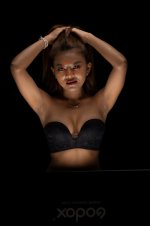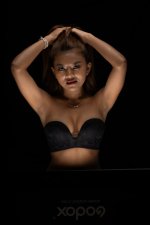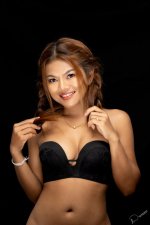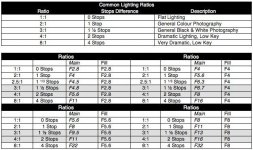Nope, that's not due to switching to TTL.
The first image is an example of "horror lighting"... you know; when you hold a flashlight below your chin telling horror stories around the campfire. Your strip light is stronger than everything else in that location.
In the second pose the strip light is farther away (less falloff/less dark shadows) and more forward/less under the chin. This is very evident by the lack of highlights/lighting underneath her bra/nose/etc. Which is also the primary cause for the lack of the offending highlights under her cheeks and forehead. Additionally, the change appears to have equalized/reversed the ratio between the strip light and the ambient/BD.
The only thing the switch to TTL did was bring up the overall exposure.
Correct
Are the two lights the same power?
The digital scale on lights is not an 'absolute' power, it's and indication of the proportion of the lights full power that it will output.
So a 400w light on 6 will be outputting twice the light of a 200w light on 6 (approximately).
This is further complicated by using different modifiers - identical strobes set to the same power but using different modifiers (in your case a stripbox and BD) will give different levels of light on the subject (and if the distance from light to subject is different, this further complicates things).
I've not done a huge amount of work with lights, but my suggestion (as a relative novice), would be to start with ONLY the BD - get that to a suitable level, then bring the strip light in to fill, starting at minimum power and gradually increasing it until you get he look you want.
Once you've done this a few times you will hopefully get a feel for the relative levels you need from your lights.
Correct. The power setting on the lights is almost irrelevant because it takes no account of the distance travelled by the light and also doesn't know whether a modifier is fitted or not, or which type of modifier.
If you want full control of the lighting start with a black frame in manual. For good results and less fuss, start with a base exposure in manual and then add highlights/fill.
The only time I would suggest TTL is when you cannot afford the time to adjust the lighting and the situation is variable (run/gun speedlight)... and even then it's usually best to give it control over the lighting power with a manual ambient/BG exposure set.
I agree. You don't need TTL with studio lighting, always use manual.
It seems to me that, just because you have two lights you feel that you need to use both of them. The correct procedure (always) is to remember that on this planet we only have one light, the sun. Sometimes that's all that's needed but whether that's the case or not you should always start with one light, and adjust the position, height, distance and everything else to create the shadows where you want them to be. That's called the key light.
After that, add a second light if needed, at the lowest possible power setting, then increase the power if necessary to the point where it is lightening the shadows to the required effect. It's actually easier to learn if you switch off the key light when doing this.
Then, but only if necessary, add a 3rd, 4th or a 99th light, each time turning off all other lights while adjusting position and intensity.
What you're doing is the opposite!
One further point - don't practice on a live model, I'm sure that you want to photograph her but she's human and will change position. Try photographing subjects such as tins of baked beans, you'll learn much faster and much better.










